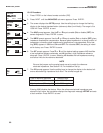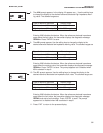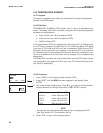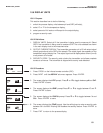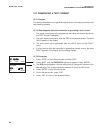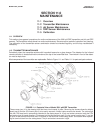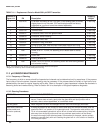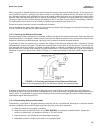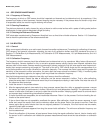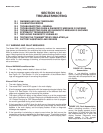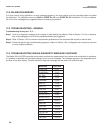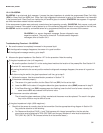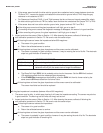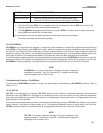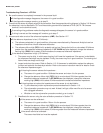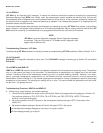
88
11.4 ORP SENSOR MAINTENANCE
11.4.1 Frequency of Cleaning
The frequency at which an ORP sensor should be inspected and cleaned can be determined only by experience. If the
process liquid coats or fouls the sensor, frequent cleaning may be necessary. If the process does not contain a high level
of suspended solids, the need for regular cleaning will be less.
11.4.2 Cleaning Procedures
The platinum electrode is easily cleaned by using a tissue to rub the metal surface with a paste of baking soda (sodium
bicarbonate). A clean platinum electrode is bright and shiny.
11.4.3 Checking the Reference Electrode
ORP electrodes manufactured by Rosemount Analytical have a silver/silver chloride reference. Section 11.3.3 describes
how to check the performance of the reference electrode.
11.5 CALIBRATION
11.5.1 General
Many users regard calibration as a routine part of sensor/transmitter maintenance. Procedures for calibrating pH sensors,
ORP sensors, and general information regarding the use of pH calibration buffers and ORP standards are given in
Sections 7.0 Calibration of pH Measurements, 9.0 Calibration of ORP Measurements, 13.0 pH Measurements, and 14.0
ORP Measurements.
11.5.2 Calibration Frequency
The frequency at which sensors should be calibrated can be determined only by experience. Many factors influence cali-
bration frequency. Sensors installed in dirty or corrosive process streams usually require more frequent calibration than
sensors used in clean water. Sensors measuring extreme pH values, particularly high pH, also require more frequent cali-
bration than sensors measuring mid-range pH. The width of the pH or ORP control range and the consequences of an
out-of-limits condition has a major influence on calibration frequency. The narrower the control range and the greater the
sensitivity of the process to control excursions, the more often the sensor should be checked. Finally, if monitoring data
are reported to regulatory agencies, the agency itself may dictate the calibration frequency.
Use the following procedure to determine how often a pH sensor should be calibrated.
1. Calibrate the sensor. Record the date of calibration and the sensor response in buffers. That is, after calibrating,
place the sensor back in the buffers and record the pH and temperature reading in each buffer. Also note the value of
the reference offset and slope.
2. Install the sensor in the process stream.
3. After the appropriate period—two weeks for a clean process, several days for a dirty or aggressive process—remove
the sensor and check its performance in buffers. Record the pH and temperature readings. The performance of the
sensor in buffer after it has been in service is called the as-found condition. Keeping a good record of as-found data is
an important step in determining the calibration frequency.
4. If the as-found data are acceptable, do not recalibrate the sensor. Return it to the process. Continue checking the cal-
ibration at the same interval.
5. If the as-found data are not acceptable, recalibrate the sensor. After calibration, check the sensor response in each
buffer and record the results. Also note the reference offset and the slope. Return the sensor to service. Check the
sensor again after a period shorter than the one originally selected. For example, if the first interval was two weeks,
repeat the check after one week.
6. After a while it will become apparent how long the sensor holds calibration. The minimum calibration frequency can
then be determined.
7. Check the calibration of the sensor at least several times during the regular calibration interval. Interim checks verify
the sensor is still in calibration and validate the process measurements made since the last calibration or calibration
check.
MODEL 3081 pH/ORP SECTION 11.0
MAINTENANCE



